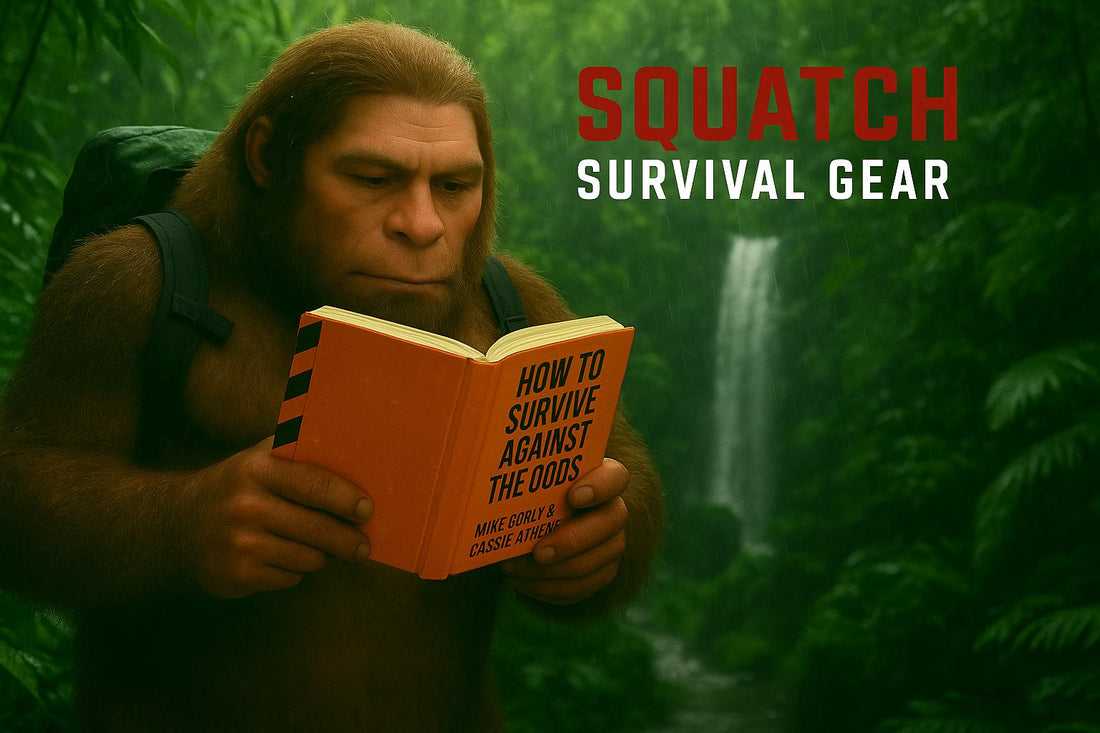Jungle Survival Tips from Chapter 4: Against the Odds
In the 1980s, Yossi Ghinsberg set off into the Bolivian jungle on what was supposed to be an adventurous hunt for rare metals. But after being separated from his group and swept away by floodwaters, he found himself alone — with little survival experience — and had to endure over three weeks of danger, starvation, and isolation. From jaguars to landslides, venomous insects to waterfall rapids, this jungle didn’t care if you were ready or not.
Chapter 4 of How to Survive Against the Odds dives deep into Yossi’s ordeal, and the “orange page” survival tips break down what every jungle traveler needs to know when the wild decides to test you.
Key Jungle Survival Lessons
-
Water is your lifeline: The jungle offers water, but that doesn’t mean it’s safe. Learn how to find, collect, and purify it using simple tools or fire.
-
Eat what you know: Focus on plants and fruits you can clearly identify. When it comes to jungle foraging, guessing wrong can mean a fast trip toward organ failure.
-
Shelter saves lives: Whether you build it or find it, staying dry and protected is mission-critical. But don’t just throw up a tarp under the first tree you find — the jungle is alive, constantly shedding limbs and deadfall. Trees rot from the inside out. Vines, wind, insects, and rain weaken limbs until they come crashing down with zero warning. Every year, more people are killed by falling branches and trees than animal attacks. Before setting up camp, look up, scan for widow-makers, and steer clear of dead or leaning trees. Jungle shelter isn’t just about staying dry — it’s about staying safe.
-
Fire is your ally: Use it for boiling water, staying warm, cooking, signaling, and keeping predators at bay.
-
A solid pack makes all the difference: Gear like the Rockape from Squatch Survival Gear provides the durability and layout you need in extreme environments. It’s tough, compact, and made to thrive where most gear quits.
🧱 The STOP Method: What to Do When You’re Lost
When the jungle swallows you up and panic sets in, don’t just keep walking. That’s how people get hurt, go in circles, or miss rescue opportunities.
Use the STOP Method:
-
S – Stop: As soon as you realize you’re lost, stop moving.
-
T – Think: Take a breath. Don’t let fear dictate your decisions.
-
O – Observe: Look around. What resources do you have? What time of day is it? Are there landmarks?
-
P – Plan: Decide your next move — whether that’s signaling, staying put, or moving with purpose.
This method is the difference between chaos and calm in a survival situation — and it's the first thing anyone should do when the trail disappears.
The Rockape Pack: Built for Environments Like This
Jungle terrain chews up weak gear. The Rockape was made for these conditions — rain-soaked forests, dense brush, and steep climbs. Its compact footprint, water-resistant construction, and smart internal organization make it ideal for off-grid survival when every ounce and every second counts.
Whether you’re trekking deep into the Amazon or hiking through unpredictable terrain, this pack was built to move with you — not against you.
Takeaways for Today’s Adventurer
You don’t have to be a jungle expert to survive — but you do need to learn from those who’ve made it out alive. Chapter 4 reminds us that preparation, adaptability, and the right mindset save lives.
Want to be ready for the unexpected? Start with a solid pack, learn the terrain, and always carry what you can’t afford to be without.

